#anime spring 2017
Explore tagged Tumblr posts
Text
dear diary, today was so #fun!! i’ve started my day by waking up, duhhh xD
i called my best friend and we planned on playing #Animal Jam!! we made such a bop in the famous #Pillow Room :p look at thattt oh my gosh (^•^)

everyone, yes you are reading this right everyone was pink!! we started by just being three, and with a little bit of magic; here we are, living the pink dream <3 thank you everybody for joining the pink movement, meant so much <3 i love Animal Jam so much!! :’) so much nostalgia!

everybody here emoting for the picture x) so much fun! <3 love you everyone xoxo <3
-Ari💕
#2014#2015#2016#chill vibes#good vibes#los angeles#spring#summer#tumblr girls#2015 tumblr#cute#animal jam#video games#games#pink#pink aesthetic#pinkcore#girlblogging#girlhood#blog#blogging#girl blogger#2017#2016 aesthetic#2016 tumblr#2016 vibes#2014 tumblr#2014 aesthetic#2014 nostalgia#love
13 notes
·
View notes
Video
Western Worm Snake (Carphophis vermis) by Peter Paplanus Via Flickr: March 29th, 2017 High of 67 degrees Fahrenheit Cloudy, light rain Jefferson County, Missouri
#western#worm#snake#carphophis#vermis#glossy#scales#serpent#pink#dolomite#glade#missouri#fossorial#critter#creature#animal#reptile#herp#herping#peter paplanus#canon rebel t3i#100mm macro lens#march#spring#2017#flickr#photogaphy#wild#wildlife#canon
8 notes
·
View notes
Text





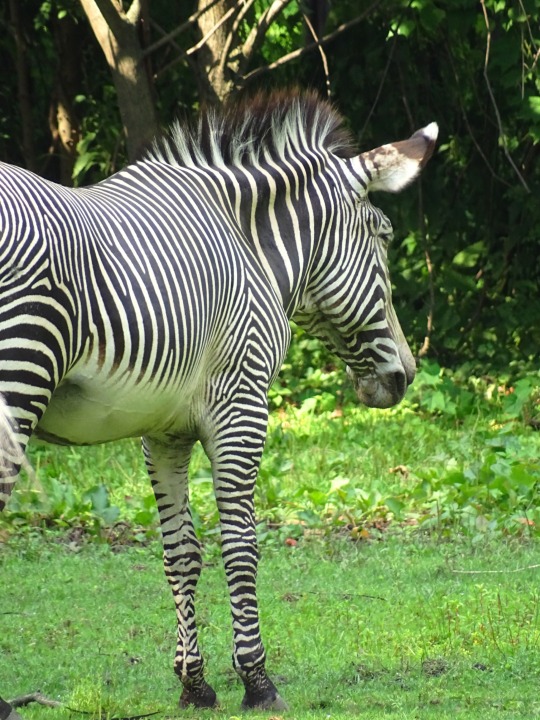


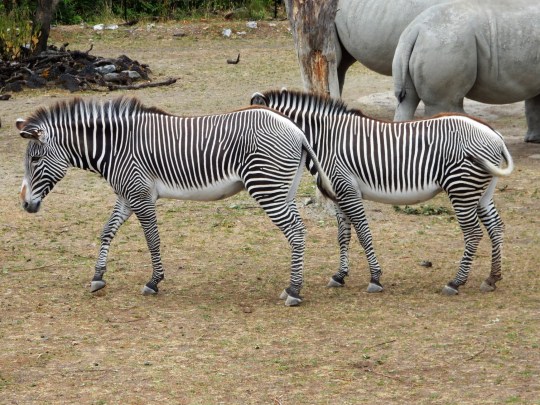










International Zebra Day
International Zebra Day is observed every year on January 31. With their natural environment diminishing and increasing human development, these gentle animals are in danger. When habitats are threatened, animals, too, become endangered. International Zebra Day is all about raising awareness and what you can do to help in the conservation of this animal. Zebras are mostly found on the African continent, in the semi-desert areas of Kenya and Ethiopia, and the hilly areas of Namibia, Angola, and South Africa. You can easily identify a zebra by its unique black and white stripes.
History of International Zebra Day
International Zebra Day was most likely founded by a consortium of conservation organizations such as the Smithsonian’s National Zoo and the Conservation Biology Institute. International Zebra Day aims to help raise awareness about the living conditions of zebras and how their numbers can be protected from further decline.
Presently, three types of zebra can be found in the wild. They are the Grévy’s zebra, plains zebra, and the mountain zebra. Although the Grévy’s zebra, found in the northern regions of Kenya and are extremely rare, they are an endangered variety having suffered a loss of more than 54% of its total population. The loss has occurred rapidly in the last three decades because of zebras being poached for their hides and pelts.
Zebras are found in the African Savannah where their natural habitat has been well preserved and not all zebras are in danger of disappearing. The other two subspecies of zebra are less endangered than the Grevy’s zebra. Plains zebras are thriving and don’t face threats of endangerment. The mountain zebra lives in South Africa, Angola, and Namibia. Along with the dangers of poaching, these zebras are also in danger from locals who might hunt them for meat when the going gets tough. Zebras have been battling many concerns regarding preserving their population.
International Zebra Day timeline
28,000 Years AgoZebras in Rock Art
They are depicted in cave rock art in African regions.
1261Zebras in Diplomacy
Zebras are sent as exotic gifts to establish democratic relationships.
1878The Quagga Becomes Extinct
Quaggas, a type of plain-dwelling zebra, become extinct.
2019Grevy’s Zebra is Endangered
It has a population of less than 2,000 mature zebras.
International Zebra Day FAQs
Why is International Zebra Day celebrated?
International Zebra Day is observed on January 31 every year to create awareness about the need to protect zebras.
How many zebras are left in the world?
They are considered endangered, according to National Geographic. There may be some 300,000 left in the wild, and on the Serengeti-Mara Plains, there are an estimated 150,000 plains zebras.
Are zebras endangered?
The Grevy’s zebra is considered endangered on the Red List of Threatened Species. Their population has gone down by about 54% over the past three decades, according to the African Wildlife Foundation.
How to Observe International Zebra Day
Dress up in its colors
Raise awareness
Donate
Celebrate International Zebra Day in style by dressing up in black and white. If you’re feeling adventurous, wear a zebra print outfit.
Talk about International Zebra Day on your social media accounts to raise awareness of this day. You can help spread information on their dwindling numbers, the dangers to their habitat, and what we can do to help.
The best way to observe International Zebra Day is by donating to organizations that ensure the welfare of zebras. You can donate to the World Wildlife Fund, Wildlife Conservation Society, and others.
5 Facts About Zebras That Will Blow Your Mind
They are fast runners
Zebra stripes are unique
Foals grow up quickly
They can sleep standing up
Zebras live in groups
Zebras can run at a speed of 40 miles per hour.
What fingerprints are to humans, stripes are to zebras.
Zebra foals can stand up as early as six minutes after they’ve been born.
However, they can sleep while lying down too.
A group of zebras is called a ‘dazzle.’
Why International Zebra Day is Important
Conserves the zebra population
Our chance to do something
Protects our future
International Zebra Day is aimed at conserving, persevering, and increasing the zebra population. But a large number of zebras isn’t enough. These celebrations ensure the animal’s well-being.
Celebrations like International Zebra Day allow us to do our bit for wildlife conservation. Through awareness programs and donation drives, we can become involved in the conservation of the species.
The planet is for all creatures to inhabit. International Zebra Day helps preserve the zebra population and envisions a future where all creatures can co-exist peacefully, without fighting for resources.
Source
#Grevyzebra#Zoo Zürich#Switzerland#spring 2023#Zurich#Southern white rhinoceros#Grévy's zebra#Lewa Savanne#outdoors#Bronx Zoo#Schweiz#USA#travel#vacation#day trip#summer 2018#original photography#spring 2017#animal#New York City#tourist attraction#flora#nature#fauna#International Zebra Day#InternationalZebraDay#31 January#meadow#tree#landscape
4 notes
·
View notes
Text
#kakegurui#kakegurui twin#kakegurui compulsive gambler#kakegurui tv series#kakegurui manga#anime#anime post#polls#tumblr#mappa studio#mappa#youtube#tiktok#instagram#yumeko jabami#it 2017#spring 2018#it 2019#2020s#kirari momobami#mary saotome#ririka momobami#anime and manga#tumblr polls#pin 📍#pintetest#questions#poker#jocker#tumbler
4 notes
·
View notes
Text

2 notes
·
View notes
Text
A Small Channel and Birds

Originally Uploaded on DeviantArt as WinxPossible on May 31, 2017
-----
Original Description:
Looks rather magnificent.
-----
No comment.
#Nature#Spring#Cherry Blossoms#Animals#BIRDS#Park#Photo#Spiders Scribbles#Snapshots#2017 Spring Showroom
0 notes
Text
Upcoming Magical Girl Projects
Magical girl fans are finally eating good after years of starvation. So good, in fact, that I decided to make a list of magical girl projects in development. This is a continually updating list whose history can be found here.

You and Idol Precure - The 22nd season of the Precure franchise, You and Idol will replace the currently airing Wonderful Precure on February 2, 2025. While walking her dog, Uta Sakura comes across Purirun, a fairy searching for the legendary Idol Precure to save her homeland from the Chokkiri Gang. Uta then transforms into Cure Idol to take back the "sparkle" of her neighbors after it's stolen by a Chokkiri agent.
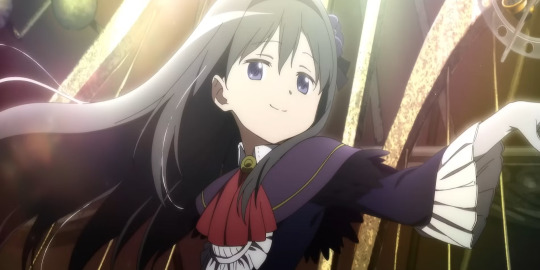
Puella Magi Madoka Magica the Movie - Walpurgisnacht Rising - The fourth PMMM movie, which will pick up where Rebellion's massive cliffhanger left off. While originally slated for late 2024, it has since been delayed to winter 2025.

Cute High Earth Defense Club Eternal Love! - The magical boy series is getting a new movie in winter 2025 as part of the celebrations for its 10th anniversary. The movie will be a time travel story that picks up a decade after the original series.

Maebashi Witches - A TV original production by Sunrise, Maebashi Witches is a coming of age story focused on a quintet of high schoolers who are approached by a strange and mysterious frog named Keroppe, who recruits them to become the titular group. Now working in a magical flower shop, the girls use the "Witchverse" pocket dimension to grant people's wishes with the power of song and dance. Has the same writer as Bocchi the Rock (Erika Yoshida) and is premiering spring 2025.
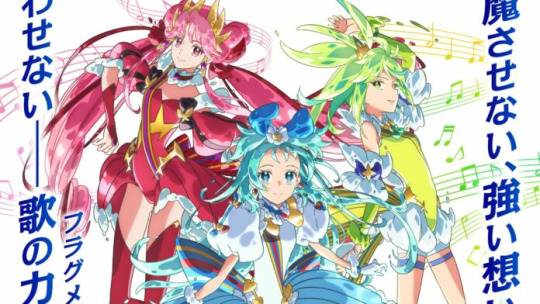
Princession Orchestra - A TV original coming in spring 2025, Princession Orchestra is based on a concept by Akifumi Kaneko, one of Symphogear's co-creators. The land of Alicepia's peace is destroyed when monsters called Jammerwocks attack, prompting a trio of young girls to step up the plate to protect the realm.

Winx Club - The western magical girl classic is getting a CGI reboot. While comments by Iginio Straffi imply that certain characters who were introduced later in the original series (such as Roxy and Nabu) will appear earlier, no specific plot details have been revealed so far. The series is coming to Netflix late 2025.
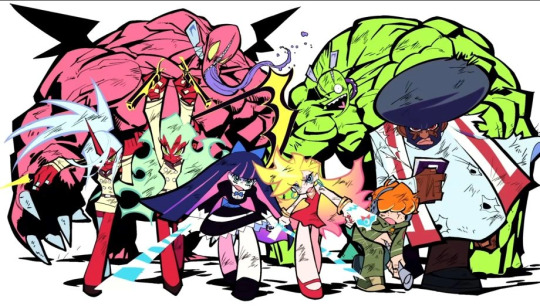
New Panty & Stocking with Garterbelt - Panty & Stocking is getting a second season after over a decade that's coming out sometime in 2025. A teaser trailer confirmed the OG voice cast's return and announced the production staff, but plot details are still unclear.
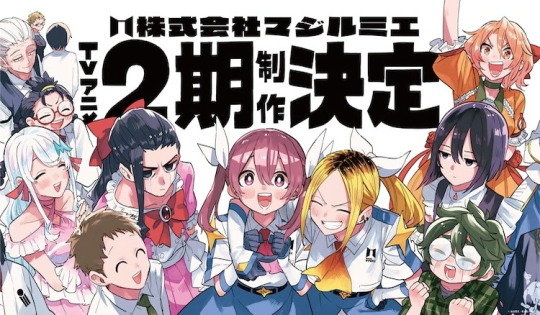
Magilumiere Magical Girls Inc. season two - Magilumiere is getting a second season, which was announced after the broadcast of season one's finale. No other details have been revealed.
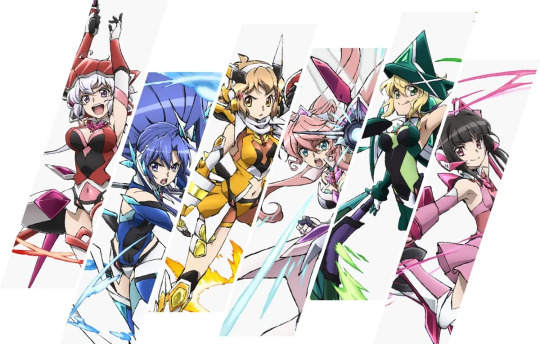
Untitled Symphogear movie - A new Symphogear movie was announced in late 2023. However, no further details have been revealed.
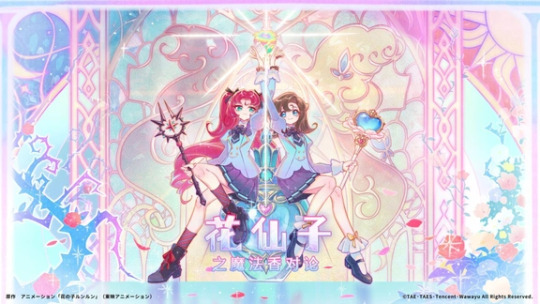
Hua Xianzi: Zhi Mofa Xiang Dui Lun - A co-production between Tencent Video and Toei Animation's Shanghai branch, this anime is being billed as a "remake" of Lunlun the Flower Fairy. The heroine is Rumi, an apprentice at a homemade perfume studio who awakens as a Flower Child due to the power of a family heirloom. She's tasked with collecting and purifying the Rainbow Flower's scattered petals, only to clash with another Flower Child along the way and discover the surprising past of her feline mentor/sidekick.

Studio Pierrot's new anime - Studio Pierrot, which has made a variety of magical girl anime from TV originals like Creamy Mami to adaptations such as Tokyo Mew Mew, has announced that they're creating a new TV original magical girl anime. No specific details have been disclosed, but the caption for the teaser image ("I want you to sing once more...") implies that it'll be a magical idol anime.
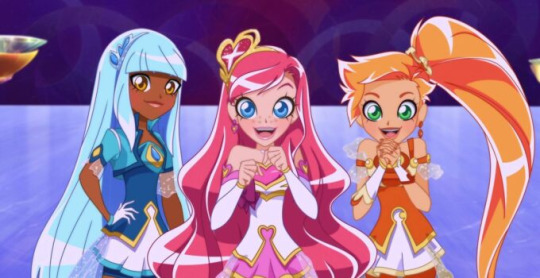
Lolirock season three - After Lolirock's second season ended with a cliffhanger all the way back in 2017, it seemed like the story would never get a proper conclusion. However, the series's creator and director, Jean-Louis Vandestoc, announced on his Instagram in 2023 that creative meetings for a third season have begun.
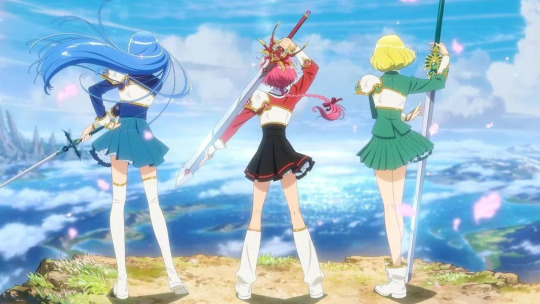
Magic Knight Rayearth revival - TMS Entertainment is making a new Magic Knight Rayearth anime in honor of the franchise's 30th anniversary. Unfortunately, it's currently unknown what the format will be.

Magical Girl Lyrical Nanoha EXCEEDS Gun Blaze Vengeance - A new installment in the seminal Magical Girl Lyrical Nanoha franchise, this will be a new TV anime to celebrate the series's 20th anniversary. No other details are confirmed, but it will presumably be connected to the upcoming EXCEEDS manga that will begin in 2025.

Cardcaptor Sakura: Clear Card season two - The sequel to the magical girl classic is getting a second season that will adapt the rest of the manga.
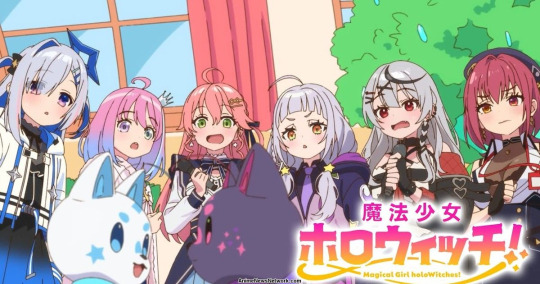
Magical Girl holoWitches - A multimedia project starring six VTubers as fictionalized versions of themselves who work as both streamers and magical girls who save people when they get trapped in the magical Holocas World. There was a four minute extended trailer in May 2024, but the anime's proper premiere date is unknown.

I Don't Want to Be a Magical Girl - An indie project by Kiana Khansmith, which follows the story of a burnt out magical girl named Aika. While she ran away from her duties in pursuit of a normal life, her position as a Protagonist™ causes her to get dragged into adventures anyway. Khansmith is currently hard at work on the pilot, which has a voice cast consisting of Anairis Quinones, Bennett Abara, Christine Marie Cabanos, Aleks Le, Shara Kirby, Michele Knotz, and Marieve Herington.
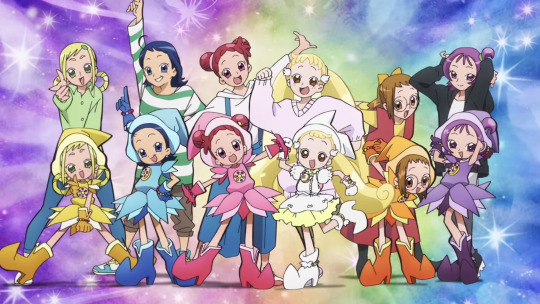
New Ojamajo Doremi thing - As part of the celebrations for the franchise's 25th anniversary, Toei Animation released two new music videos for the series' 1st OP and 4th ED with the promise that a new project will be made if the videos reach a combined 5 million views. This goal has since been met. Due to the girls being adults in the videos, the new project will presumably be an adaptation of the Ojamajo Doremi 16-20's sequel series of light novels.
#magical girls#mahou shoujo#magilumiere magical girls inc.#puella magi madoka magica#precure#pretty cure#princsession orchestra#winx club#winx club reboot#symphogear#hana no ko lunlun#lolirock#magic knight rayearth#cardcaptor sakura#magical girl holowitches#ojamajo doremi#cute high earth defense club love#panty and stocking#you and idol precure#maebashi witches#i don't want to be a magical girl#magical girl lyrical nanoha
2K notes
·
View notes
Text
Crunchyroll fails to meet industry standards for Closed Captioning
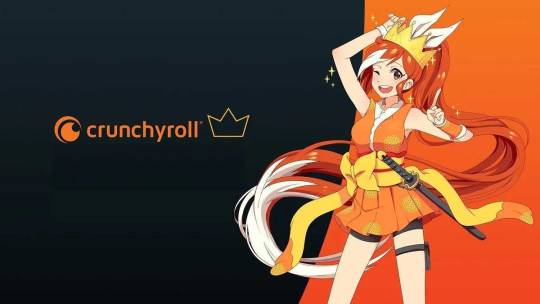
In 2017, Sony Pictures Entertainment bought a 95% majority share of Funimation Entertainment for $143 million. Four years later, Sony completed its acquisition of Crunchyroll for $1.175 billion, bringing the two companies back together after their partnership break in 2018. The decision cements Crunchyroll-qua-Sony’s place as the largest monopoly in the English-language anime streaming space.
The merger has included the gradual sunsetting of Funimation’s streaming site; all titles that aired after Spring 2022 will be uploaded exclusively to Crunchyroll; while any Funimation-exclusive titles have either been transferred over to Crunchyroll or will leave streaming, and dubbing projects are now carried out under the Crunchyroll umbrella. All of this makes one of the biggest issues with the site even more glaring: with a few exceptions, Crunchyroll does not offer closed captioning for its English dubs.
Read it at Anime Feminist!
345 notes
·
View notes
Note
Hello! I discovered your blog relatively recently so forgive me if you’ve already done this but would you consider compiling a list of all the times crossdressing has been done in bl? Whether as a plot-device, for comedy, for serious reasons, just all the times crossdressing as a trope has appeared.
In a similar vein if you wanted to explore it I’d also be interested in the breadth of trans rep in bl/queer shows and movies in Asian media and if that ever blends into the crossdressing (maybe also drag would be interesting to throw into the mix as well?). Also just an exploration of Queer Femme characters that are not made fun of or villainized by the narrative would be cool! Basically just exploring femme queer aspects in bl in all its good, bad, and I’m sure sometimes ugly forms!
Hi, welcome! Ooo, crossdressing. Frankly I can't think of many and I don't have great recall on this one so I will have to ask the feed.
BL's With Crossdressing
Meet You At The Blossom (China 2024) - major plot point
Nobleman Ryus Wedding (Korea 2021) - historical, entire premise
Kieta Hatsukoi AKA My Love Mix-Up! (Japan 2021)
Love Stage (Japan 2020) - major plot point (better executed in the anime version)
Love Stage (Thailand 2022) - major plot point better executed than either Japanese version
About Youth (Taiwan 2022)
I Told Sunset About You (Thailand 2020)
Jack & Joker (Thailand 2024)
My Bromance the movie (Thailand 2014)
My Love Mix-up (Thailand 2023)
I Am Your King (Thailand 2017) - this is Mark Siwat's first BL, and yeah, he's the one cross dressing (he plays the femme rich boy in Jack & Joker)
The Sign (Thailand 2024) - historical costume for the girl of the past being played by a boy is a gender mix of female/male attire, it's very clever
YYY (Thailand 2022)
I feel like Gun has crossdressed in one of his. Theory of Love maybe?
Mr Cinderella (Vietnam 2022)
My Sky (Vietnam 2017) - trigger warning
My Lascivious Boss (Vietnam 2021) - major plot point

Moots et al...... other (older?) BLs with cross dressing?
Others worth noting
Either the representation or the BL is in question, or it's not exactly crossdressing it's something else. Still, some obscure ones just in case.
Wait For Me at Udagawachou AKA Udagawachou de Matteteyo (Japan 2015) - may be triggering involves body dysmorphia and fetishization of trans identity, but if you can you should watch this
Spring of Crush (Korea 2022) - this is a bromance
Rainbow Prince (Pinoy 2022)
DNA Says Love You (Taiwan 2022)
Great Men Academy (Thailand 2019)
3 Will Be Free (Thailand 2019)
Love Sick 2024 (Thailand) - made an aggressively male character from the original into a newly out 3rd gender/trans character in the new version, very intentional modernization choice, fascinating. Directly addresses dead naming among other things in the few scenes she has.
Saneha Stories series from Thailand
You should follow Cooheart on IG he does some fantastic gender bending and crossdressing styles. He's the fashion icon gift that keeps on giving.
Thai BL has tons of representation and use of characters/actors of Thai third gender, a lot of which is for comedy. Rarely if ever in BL more like Diary of the Tootsies. I would say my favorite and most beloved 3rd G rep is in The Sign. But that is is different than what you asked for.

Femme rep I have talked about before, most specifically in the context of Daisy in Secret Crush On You......
More Queer Lens & Thai BL
BL Linguistics & Queer Identity I Am Gay versus I Like Men
Husband Wife Language in Thai BL (SOTUS, TharnType + a lot of 2022 BL)
Thai BL Lacks Representation of Butch & Transgender Men (and why this has to do with Thailand's 3rd Gender)
Thai Military Service & Thai BL
Hope that helps.
(source)
#asked and answered#bl with crossdressing#crossdressing in bl#japanese bl#thai bl#taiwanese bl#korean bl#but not many#chinese bl#BL in drag
54 notes
·
View notes
Text
[TRANSLATION] Reminiscence*Monochrome Checkmate (2024 Edition) - Masterlist

✦ Season: Spring, one year ago (! timeline) ✦ Writer: Akira ✦ Release Date: 31st May 2017 ✦ Characters: Leo, Izumi, Arashi, Eichi, Ritsu, Tsumugi, Madara, Tsukasa ✦ Translator: royalquintet ✦ Proofreader: hyenahunt (JP & ENG)
✦ Masterlist ✦
The iconic event story from seven years ago and the one that originally got me involved in Enstars fantranslation in the first place.... now redone and remastered completely from scratch to celebrate the Checkmate anime! Please do check it out, royalquintet did a stellar job and we both did our best to do true justice to the story this time around!
I sat on this post for almost a week because I wasn't sure what to say but the masterlist link itself has some in-depth comments by both royalquintet and myself, so I'll let those do the talking! We hope you enjoy!
#ensemble stars#enstars#enstars translation#type: masterlist#era: !#type: event#leo tsukinaga#izumi sena#arashi narukami#eichi tenshouin#ritsu sakuma#tsumugi aoba#madara mikejima#tsukasa suou#anyone else dying to the checkmate anime hahahaha#(is dead)
172 notes
·
View notes
Text
Velveteen vs The Masterpost
When I was in high school, I stumbled across Seanan McGuire’s series of “Velveteen vs.” stories, staring Velma “Velveteen” Martinez, a former child superhero with the power to animate toys, who stumbles from one misadventure to the next. Taking place in a world where superheroics is run almost entirely by a single corporation and child heroes are put through some of the worst abuses of child stars, the series features fun characters, worldbuilding, and relationships, and of course, cool fight scenes. In true comics fashion, it ends on a rather open-ended note and, as far as I can tell, she hasn’t written any stories since 2017, but most of the main arcs are tied up and I definitely recommend you check them out!
(I became obsessed with these stories after finding them. An example of me getting into comics before I actually got into comics.)
(Thank you to https://broken-engines.blogspot.com/ for compiling directory of story links I could borrow for this post.)
Velveteen vs. The Isley Crayfish Festival
Velveteen vs. The Coffee Freaks
Velveteen vs. The Flashback Sequence
Velveteen vs. The Old Flame
Velveteen vs. The Junior Super Patriots, West Coast Division
Velveteen vs. The Eternal Halloween
Velveteen vs. The Ordinary Day
Velveteen vs. Patrol
Velveteen vs. The Blind Date
Velveteen vs. Blacklight vs. Sin-Dee, Part I
Velveteen vs. Blacklight vs. Sin-Dee, Part II
Velveteen vs. The Holiday Special
Velveteen vs. The Secret Identity
Martinez and Martinez v. Velveteen
Velveteen vs. The Alternate Timeline, Part I
Velveteen vs. The Alternate Timeline, Part II
Velveteen vs. The Retroactive Continuity
Velveteen Presents Victory Anna vs. All These Stupid Parallel Worlds
Velveteen vs. The Uncomfortable Conversation
Velveteen vs. Bacon
Velveteen vs. The Robot Armies of Dr. Walter Creelman, DDS
Velveteen vs. The Fright Night Sorority House Massacre Sleepover Camp
Velveteen vs. Vegas
Velveteen Presents Victory Anna vs. The Difficulties With Pan-Dimensional Courtship
Velveteen vs. Legal
Velveteen Presents Jackie Frost vs. Four Conversations and a Funeral
Velveteen vs. Jolly Roger
Velveteen vs. Everyone, Part I
Velveteen vs. Everyone, Part II
Sponsorship: Velveteen vs. The Epilogue
Velveteen vs. The Aftermath
Velveteen vs. Hypothermia
Velveteen vs. Santa Claus
Velveteen vs. Global Warming
Velveteen Presents The Princess vs. Public Relations
Velveteen vs. The Thaw
Velveteen vs. Balance
Velveteen vs. Spring Cleaning
Velveteen Presents Polychrome vs. The Court of Public Opinion and Not Punching Anyone
Velveteen vs. The Melancholy of Autumn
Velveteen vs. A Disturbing Number of Crows
Velveteen vs. Trick or Treat
Velveteen Presents Action Dude vs. Doing the Right Thing
Velveteen vs. The Consequences of Her Actions
Velveteen vs. Going Home Again
Velveteen vs. Everything You Ever Wanted
Velveteen vs. The Retroactive Continuity (2)
Velveteen Presents Jacqueline Claus vs. The Lost and the Found
Velveteen vs. Recovery
Velveteen vs. Temptation
729 notes
·
View notes
Text
ㅤㅤㅤ°ㅤㅤㅤ ㅤ𖤐 ִֶָ 𝐉𝐀𝐍𝐄 𓂃 profile 🧷
( moodboard cred: @lorlita )


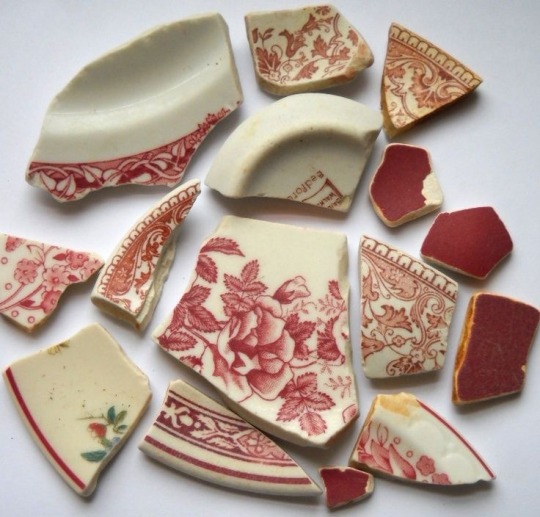
。 ✧ everything is figureoutable ! ⁺ 。

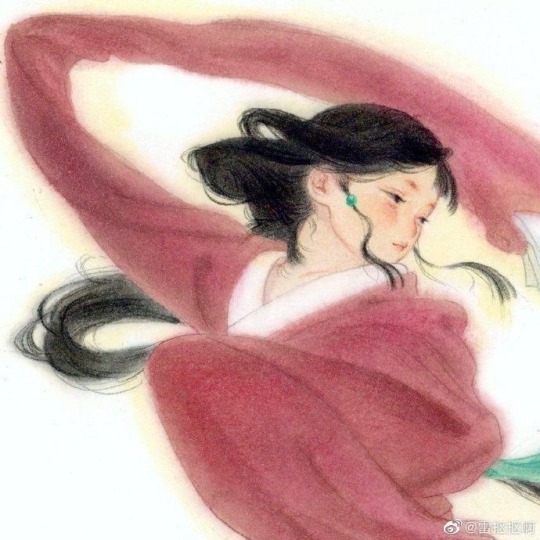
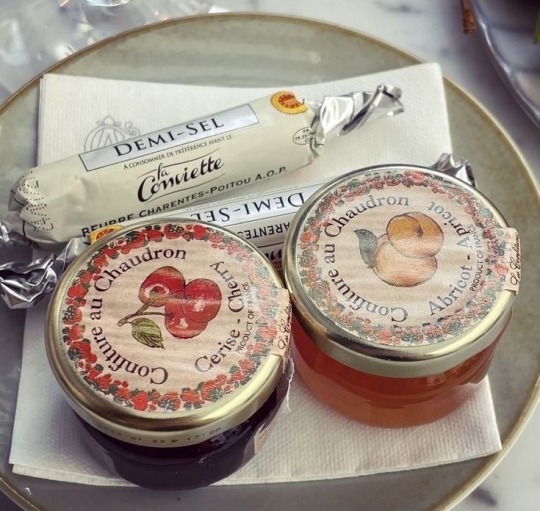
— BIRTH NAME ੭ go minri
— CHANGED NAME ੭ hwang jane ❪ since. '06 ❫
— CHINESE NAME ੭ zhao shengyue
— JAPANESE NAME ੭ hayashi yukicho
— NICKNAMES ੭ yue ❪ c-friends ❫, chocho ❪ dad, j-friends, jisoo ❫, honey ❪ jennie ❫, honey unnie ❪ rosè, lisa ❫, twinie ❪ chungha ❫
— hangul ੭ 고민리 → 황제인
— hanzi ੭ 趙勝岳
— kanji ੭ 林幸蝶
— NAME MEANINGS ੭ jane, God is gracious _ shengyue, rising moon _ yukicho, snowy morning
— BIRTHDAY ੭ 9th February, 1996
— ZODIAC SIGN ੭ aquarius
— CHINESE ZODIAC SIGN ੭ rat
— HEIGHT ੭ 170 cm ❪ 5'6" ❫
— WEIGHT ੭ 65 kg ❪ 143 lbs ❫
— BLOOD TYPE ੭ O
— GENDER ੭ female ❪ she/her ❫
— SEXUALITY ੭ bisexual
— RELATIONSHIP STATUS ੭ taken ❪ since. 2020 ❫
ㅤㅤㅤ🎀 | 𝐏𝐄𝐑𝐒𝐎𝐍𝐀𝐋𝐈𝐓𝐘 ⊱ 🐈⬛

— MBTI ੭ entj / entp
— TRAITS ੭ independent, diplomatic, open-minded, energetic, impatient, ambitious, outgoing, confident, competitive, passionate, creative
— LIKES ੭ hugs, animals, waffles, makeup, dancing, martial arts, yoga, jogging, reading, playing video games, formula one, rugby, cars
— DISLIKES ੭ bananas, bright lights, spring season, insensitive people, snorers, knitting
— HOBBIES ੭ reading, baking, drawing, playing video games, go-karting, pottery, painting, jogging, annoying her twin brother eli, stealing her brothers clothes
ㅤㅤㅤ ❄ | 𝐂𝐀𝐑𝐄𝐄𝐑 ⊱ 🌬

— COMPANY ੭ YG Entertainment ❪ 2012 - present ❫, Valor Entertainment ❪ 2024 ❫
— ACTIVE SINCE ੭ 2015
— TRAINEE PERIOD ੭ 2012 ‐ 2016 ❪ 3 yrs & 4 mths ❫
— GROUP ੭ BLACKPINK ❪ 블랙핑크 ❫
— DEBUT ੭ 2016
— STAGE NAME ੭ JANE ❪ 제인 ❫
— REPRESENTATIVE EMOJI ੭ 🦁
— INSTAGRAM ੭ diaryofjane ❪ personal ❫ ; valorent.official ❪ business ❫
— TWITTER ੭ diaryofjane ❪ personal ❫ ; valorent.official ❪ business ❫
— TIKTOK ੭ diaryofjane ❪ personal ❫ ; valorent.official ❪ business ❫
— YOUTUBE ੭ Valor Entertainment
— WEVERSE ੭ diaryofjane_
— SOLO DEBUT ੭ 2021
— ACTING DEBUT ੭ 2015
— APPEARANCES ੭ high society (jang yoonha, 2015), fight for my way (choi aera, 2017), what's wrong with secretary kim ? (kim miso, 2018), my name (yoon jiwoo, 2021), the kings affection (crown prince lee hwi, 2021), shang-chi and the legend of the 10 rings (xu xialing, 2021), the 355 (lin misheng, 2022), sweet home (lee eunyu, 2020-2023), a good day to be a dog (han haena, 2023), upgraded (ana, 2024)
— CHOREOGRAPHED FOR ੭ blackpink, treasure, taeyang, enhypen, aespa, le sserafim, boynextdoor, txt, ive, monsta x, joohoney, taylor swift, stray kids, seventeen
— PRODUCED FOR ੭ blackpink, txt, treasure, nct, aespa, selena gomez, niall horan, superm, ive, one direction, jeon somi, itzy, le sserafim
ㅤㅤㅤ 🌺 | 𝐅𝐀𝐌𝐈𝐋𝐘 ⊱ 🍃

— MOTHER (adoptive) :
੭ Birth Name ; hwang luhua ❪ 황루화 ❫
੭ Chinese Name ; zhao luhua ❪ 趙露華 ❫
੭ Japanese Name ; hayashi natsumi ❪ 林なつみ ❫
੭ Birthday ; 28th June, 1974
੭ Occupation ; café owner
੭ Residence ; london, england
੭ Relationship Status ; married ❪ since. 1994 ❫
੭ Children ; 3
— FATHER (adoptive) :
੭ Birth Name ; hwang wijeong ❪ 황위정 ❫
੭ English Name ; kenny hwang
੭ Birthday ; 17th September, 1974
੭ Occupation ; head engineer for McLaren F1 Team
੭ Residence ; london, england
੭ Relationship Status ; married ❪ since. 1994 ❫
੭ Children ; 3
— BROTHER (adoptive) :
੭ Birth Name ; hwang jin ❪ 황�� ❫
੭ Chinese Name ; zhao mingtao ❪ 趙明濤 ❫
੭ Japanese Name ; hayashi kurotori ❪ 林黒鳥 ❫
੭ Birthday ; 9th February, 1996
੭ Occupation ; idol
੭ Residence ; seoul, south korea
੭ Relationship Status ; unknown
੭ Children ; 1
— BROTHER (adoptive) :
੭ Birth Name ; hwang junho ❪ 황준호 ❫
੭ Chinese Name ; zhao haoyu ❪ 趙浩宇 ❫
੭ Japanese Name ; hayashi isagi ❪ 林いさぎ ❫
੭ Birthday ; 9th February, 1996
੭ Occupation ; idol
੭ Residence ; seoul, south korea
੭ Relationship Status ; taken ❪ since. 2023 ❫
੭ Children ; 0
— NEICE :
੭ Birth Name ; hwang cheonsa ❪ 황천사 ❫
੭ English Name ; angel hwang
੭ Chinese Name ; zhao shuijing ❪ 趙水晶 ❫
੭ Japanese Name ; hayashi hanami ❪ 林花見 ❫
੭ Birthday ; 10th October, 2021
੭ Occupation ; school ❪ private ❫
੭ Residence ; seoul, south korea
ㅤㅤㅤ🥀 | 𝐅𝐔𝐍 𝐅𝐀𝐂𝐓𝐒 ⊱ 💋
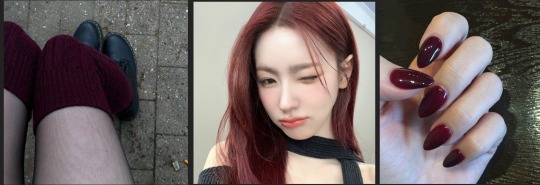
𝐢. she is the tallest member of blackpink.
𝐢𝐢. jane refers to herself as a triplet, as both her adoptive brothers share the same birthday as her, and so they were raised as being referred to as triplets ! ( junho and jin are fraternal twins).
𝐢𝐢𝐢. she is the most extroverted in the group, and often finds great joy in embarrassing her fellow members in the public eye.
𝐢𝐯. miss girl is severely allergic to tomatoes – and she genuinely despises them, names them her greatest (and only) weakness in this world.
𝐯. jane has 2 cats named mochi and rari; she really wants her third pet to be a dog, and she plans to get one soon.
𝐯𝐢. a coffee enthusiast and cocktail connoisseur – like, she's actually quite skilled in mixology.
𝐯𝐢𝐢. she absolutely adores musicals, and cannot sit through a movie that is more than 2 hours long, her short attention span just does not allow it.
𝐯𝐢𝐢𝐢. within formula one the teams he's always supported since falling in love with the sport at 10, is mclaren – and in terms of her favourite rugby team, it's the all blacks, new zealand's national rugby team.
𝐢𝐱. jane is legally blind and cannot see a single recognizable object without her glasses or contacts �� my girl lives in a world of shapes.
𝐱. her biggest scandal in her career was being in a rumored fist-fight with seventeen's the8.
#blackpink 5th member#blackpink in your area#blackpink is the revolution#blackpink lisa#blackpink jisoo#blackpink jennie#blackpink#blackpink rose#imnameimswrld#blackpink-jane
40 notes
·
View notes
Text
Today's translation #663
Pash! 2017/3, Pash! arts history
2017/02 Artist: Aizawa Kagetz
This art depicts a beautiful beach on the Samet Island located in Rayong province of Thailand. The scenery that Yuuri and the others are admiring is the crystal clear, transparent sea, stretching ahead to the horizon! That's the view that is on the opposite side, that is not drawn in this art, but I think it's fun to imagine that scenery, to feel as if we were watching the view together with them. It would be nice to go on a beach!

2017/03 Artist: Seki Minami
In this art, I wanted to capture the feeling of a warm day in Spring, that naturally makes your spirits high. The request from the Editor was 'The three of them close together', but I thought that Yurio would most likely act shy in such a situation... etc. - drawing them in-character was very fun, but also difficult. Victor is ruffling Yurio's hair, and I remember that I was trying very hard to find a way to make this gesture look soft and full of love... I'm happy that I get to draw Yurio and Makkachin, because I didn't draw them for the anime.

2017 Pash! Illustration file Artist: Yamada Ayumi
To make the props laying around the characters in this art 'Yuri!!!'-like, I added katsudons etc. as key-straps and stickers! What was difficult for me was to get distance between the three characters just right. I adjusted the composition to make Yurio not too far away from Yuuri and Victor, but at the same time not too close, too. I think that thanks to Makkachin and the cats around Yurio the distance between them appears closer! Personally, I very like Makkachin's face catching the wind, because it looks like a very pleasant experience.

41 notes
·
View notes
Text











National Alpaca Day
Alpaca Day is a special day that celebrates the unique and gentle alpaca. It falls on September 26th every year.
People across various countries show their appreciation for these friendly animals. Alpaca Day highlights the importance of alpacas to agriculture, their contribution to the environment, and the need to conserve them and their natural habitats.
Alpacas, our companions for thousands of years, are more than just wool providers. With their soft, padded feet and gentle grazing that doesn’t harm pastures, they are the unsung heroes of sustainable farming.
The Alpaca Owners Association, established in 2014, is dedicated to educating the public about alpacas and their role in sustainable farming. Events across the U.S.A. provide a unique opportunity to experience these gentle creatures up close.
Why do we celebrate Alpaca Day? For starters, alpacas are known for their friendly nature, unique personalities, and their wool quality, which is softer and warmer than many others.
They play a significant role in maintaining ecological balance, making them valuable to both agriculture and wildlife conservation. Alpaca Day serves as a reminder of the bond between humans and alpacas and the importance of protecting these charming animals and their environment.
History of Alpaca Day
Alpaca Day is a day dedicated to celebrating alpacas, the adorable, fluffy animals native to South America. The day acknowledges their significance in agriculture and their contributions to human society.
Although the origins of Alpaca Day as a celebration are not clearly documented, various countries have adopted their versions, such as New Zealand’s National Alpaca Day on May 2, Peru’s National Alpaca Day on August 1, and National Alpaca Farm Day in the United States on September 26.
The Alpaca Owners Association, established in 2014, plays a pivotal role in organizing events across the U.S. to educate people about alpacas and promote the alpaca farming industry. These events offer a chance to meet alpacas up close and learn about their care, lifestyle, and the products made from their wool.
Alpacas have been part of human history for thousands of years, serving as companions and providers of luxurious wool.
They are known for their friendly and gentle nature, each with a unique personality. Besides their role in agriculture, alpacas are celebrated for their environmental friendliness, as their grazing habits do not harm the land.
Celebrating Alpaca Day involves various activities, from visiting alpaca farms to learning crafts with alpaca wool. It’s a day to appreciate these creatures’ contributions and promote awareness about their conservation.
How to Celebrate Alpaca Day
Get Cozy with Alpaca Wool Crafts
Why not knit or crochet something special using alpaca wool? It’s super soft and warm, perfect for that cozy scarf or beanie you’ve been wanting. Imagine the satisfaction of creating something unique while celebrating these fluffy friends.
Farm Visit Fiesta
A trip to an alpaca farm could be the highlight of your Alpaca Day. Feed them, pet them, and even snap a selfie with a new fluffy pal. Farms often have tours or open days, so check out what’s happening near you.
Learn and Share Fun Alpaca Facts
Did you know alpacas can hum when they’re content? Dive into some alpaca trivia and share these fun facts with friends and family. You’ll be the life of the party, spreading joy and knowledge about these gentle creatures.
Create and Donate
Consider crafting alpaca-themed items like plush toys or art and donate them to local children’s hospitals or charities. It’s a heartwarming way to spread love and awareness about these adorable animals and their special day.
Celebrating Alpaca Day is about embracing these animals’ quirky and adorable nature. From crafting with their luxurious wool to learning fascinating facts about them, there are many ways to honor these remarkable creatures.
So, take part, be creative, and most importantly, have fun!
Source
#National Alpaca Day#NationalAlpacaDay#26 September#Vicugna pacos#Llama#Alpaca#1 August#travel#day trip#Zoo Zürich#Zurich#outdoors#original photography#landmark#eating#animal#Schweiz#Switzerland#spring 2018#2017#2012#national day#flora#fauna#nature#close up#tourist attraction
4 notes
·
View notes
Note
maybe a weird request, but any good horror romance movies?
Here's some movies off the top of my head that focus heavily on romance...
Ghosts:
The Ghost and Mrs. Muir (1947)
Mahal (1949)
Vampires:
Bram Stoker's Dracula (1992)
Thirst (2009)
Only Lovers Left Alive (2013)
Humanist Vampire Seeking Consenting Suicidal Person (2023)
Werewolves:
A Werewolf Boy (2012)
My Animal (2023)
Supernatural Horror:
Spring (2014)
Ferryman Maria (1936)
Cat People (1942)
Thelma (2017)
The Shape of Water (2017)
Inhuman Kiss (2019)
Sci-Fi Horror:
The One I Love (2014)
Psychological Horror:
The Man Who Laughs (1928)
Song at Midnight (1937)
Rebecca (1940)
The Handmaiden (2016)
Beast (2017)
The Perfection (2018)
Benedetta (2021)
Bones and All (2022)
Horror Comedy:
Little Shop of Horrors (1986)
Warm Bodies (2013)
The Love Witch (2016)
11 notes
·
View notes
Text
Sleeping Duck

Originally Uploaded on DeviantArt as WinxPossible on May 31, 2017
-----
Original Description:
She just looked so cute, so I decided to take a pic. She was gone when I was leaving about an hour later, though.
-----
No comment.
0 notes
